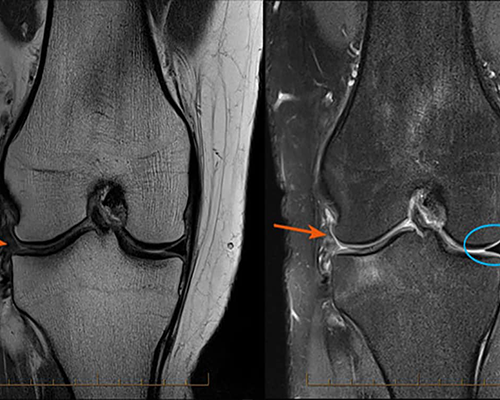What is a Knee MRI?
An MRI test uses magnets and radio waves to capture images inside your body without making a surgical incision. It can be performed on any part of your body. A knee MRI looks specifically at your knee and its surrounding areas.
An MRI lets your doctor see the soft tissues in your body along with the bones. This allows them to inspect the elements of the knee that might have been injured during physical activity or from wear and tear. The test can also provide detailed images of various sections of the knee, such as bones, cartilage, tendons, muscles, blood vessels, and ligaments. An MRI takes images in better contrast than other tests.
Your doctor may want you to undergo a special kind of MRI called an MRI arthrogram. For this procedure, your doctor will inject a contrast fluid, or dye, into your knee to provide a better view of its structure.
Currently, MRI is the most sensitive imaging test of your head (particularly, your brain), as compared to other imaging techniques, such as CT (computed tomography) scans or X-rays.

How to prepare for a knee MRI?
Preparations for an MRI vary between testing facilities. Your doctor or attending technician will give you complete instructions on how to prepare for your specific test.
Before your MRI, your doctor will explain the test and do a complete physical and medical history. Be sure to tell them about any medication you’re taking, including over-the-counter drugs and herbal supplements. Mention any known allergies, too. Let them know if you have any implanted medical devices, because the test can affect them.
Tell your doctor if you’ve had allergic reactions to contrast dye in the past or if you’ve been diagnosed with kidney problems. Let them know if you’re pregnant, concerned you may be pregnant, or breastfeeding. MRIs performed with radioactive contrast dye aren’t considered safe for pregnant women. Breastfeeding mothers should stop breastfeeding for about two days after the test.
The MRI machine is a tight, enclosed space. If you’re claustrophobic or scared of small spaces, be sure to talk with your doctor about your options. They may give you a sedative to help relax. If your claustrophobia is severe, your doctor may opt for an “open” MRI. This type of MRI uses a machine that doesn’t enclose your body.
